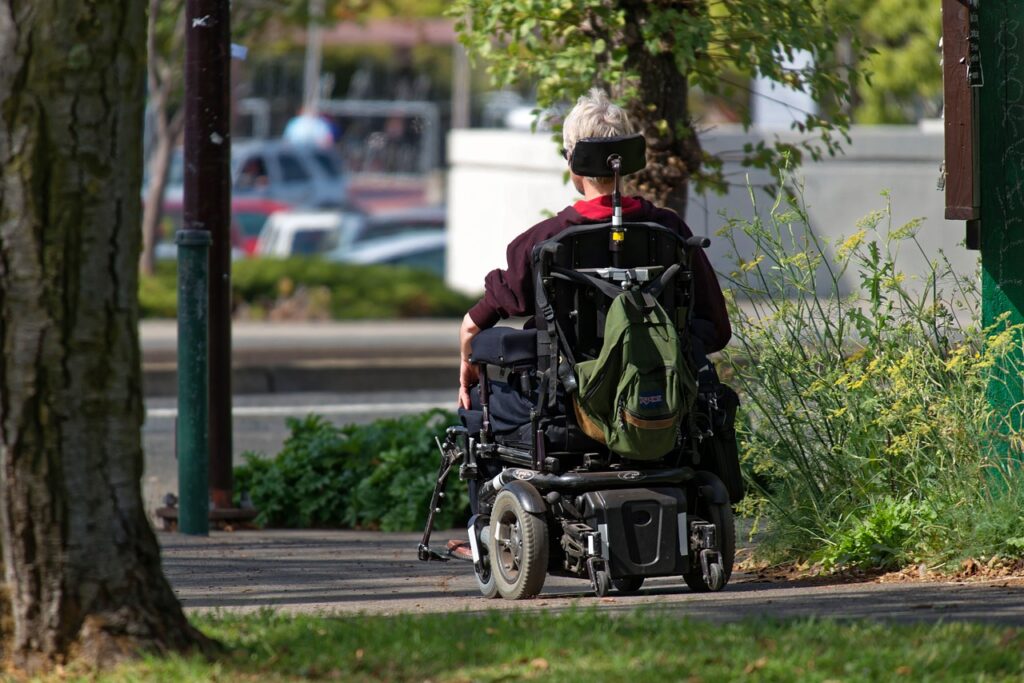
Motorized wheelchair. Image by Kevin Phillips from Pixabay
Mobility aids, such as walkers, canes, wheelchairs, and scooters, are closely related to assistive technologies. Assistive technologies encompass a wide range of devices, tools, and systems designed to assist individuals with disabilities or limitations in their daily activities. Mobility aids fall under the category of assistive technologies as they are specifically designed to improve mobility and enhance independence for individuals with mobility challenges.
These mobility aids serve as assistive devices that support individuals in maintaining or regaining their ability to move around and perform activities. Walkers, canes, wheelchairs, and scooters are carefully engineered to provide stability, support, and ease of mobility for people with various mobility impairments.
By utilizing these assistive technologies, individuals with mobility limitations can regain or retain their mobility, navigate their surroundings more easily, and engage in activities that would otherwise be challenging. These aids promote independence, accessibility, and participation in everyday life, helping individuals maintain a sense of freedom and quality of life.
Furthermore, mobility aids can be enhanced with additional assistive technologies to provide even greater benefits. For example, modern wheelchairs or scooters may incorporate electronic controls, power-assisted propulsion systems, or advanced positioning and pressure management features, further enhancing their functionality and user experience.
Overall, the relationship between mobility aids and assistive technologies is inseparable. They are a vital component of the broader field of assistive technologies, providing individuals with the means to overcome mobility challenges and enabling them to lead more independent and fulfilling lives. Checkout our list of 100 Assistive Technologies that can help living independently.